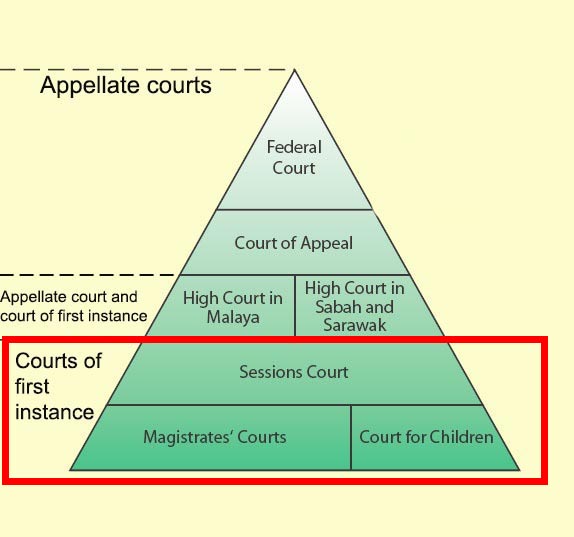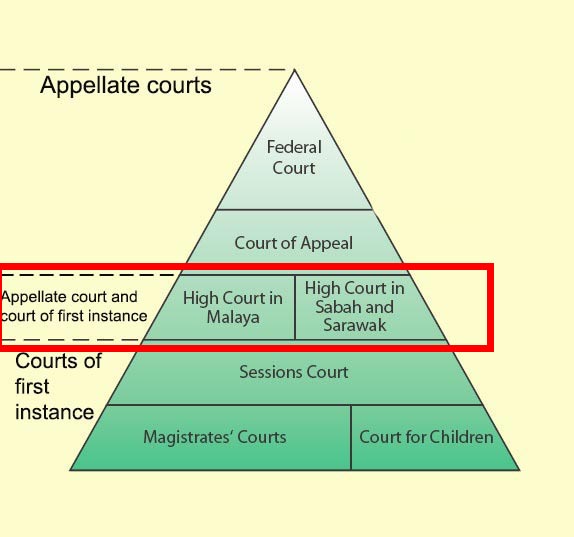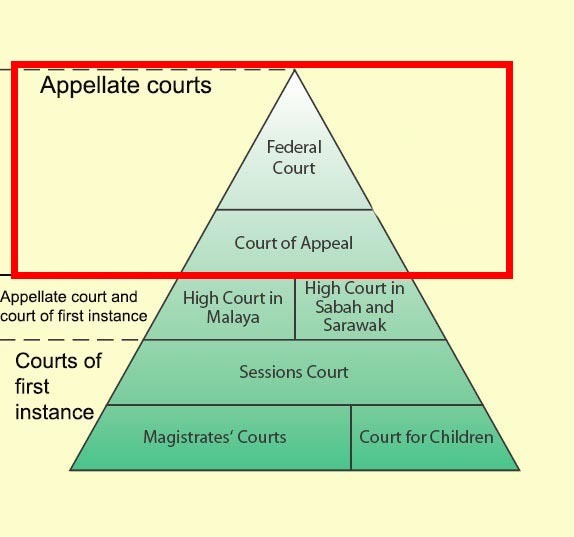

Criminal
Malaysian criminals go to different courts depending on their crime. Here's how it works
almost 7 years ago Denise C.If you are a long term follower of AskLegal, you would know that the law is (widely speaking) divided into civil law and criminal law.
Criminal cases are when a person commits a crime and the government takes action against them. On the other hand, civil cases are for private lawsuits like you suing another party for breach of contract or when you sue your boss for breaching employment regulations. We covered how there are many different courts in the civil system and what it means in a previous article.
Like how there is a court hierarchy for civil cases, a similar hierarchy exists for criminal cases but it works in a slightly different manner. Before we kick things off, a note to bear in mind is that we won’t be covering the Syariah courts or Native courts in this article.
If you’ve read our civil courts article, you might get a slight feeling of deja vu because the civil system and the criminal system are both…
Based on the same hierarchy

Similar to how the civil system works, the hierarchy is meant to facilitate hearings and ensure that the system works well. The courts of first instance and appellate courts make up the system of criminal courts.
Courts of first instance are where the offender is brought in before the court for the first time.
These courts are divided into the Magistrates Court, the Syariah Court, and the High Court.
Appellate courts are where appeals from the courts of first instance are heard. While like the civil courts, they can only hear appeals from the lower courts, the appellate courts in the criminal cases have the power to listen to cases and make decisions to avoid injustices, in very limited cases. We will discuss this in greater detail below.
The appellate courts are made up of the High Court, the Court of Appeal, and the Federal Court.
With this quick breakdown in mind, let’s dig deeper into the respective courts.
Magistrates Court and Sessions Court

The Magistrates Court’s jurisdiction can be found in the Subordinate Courts’ Act 1948 (“SCA 1948”). There are two kinds of Magistrates, a First Class Magistrate and a Second Class Magistrate. The difference between them lies in their jurisdiction powers; their hearing jurisdiction and sentencing jurisdiction.
A Second Class Magistrate’s jurisdiction can only be found under section 88 and section 89. In section 88, it is stated that a Second Class Magistrate can only hear cases (hearing jurisdiction) where the offences are punishable with a maximum term of imprisonment not exceeding 12 months or a fine or a combination. While they can hear such offences, the punishment that they can pass (sentencing jurisdiction) cannot exceed 6 months’ imprisonment and/or RM1,000 fine.
A First Class Magistrate, on the other hand, has greater powers. In section 85, a First Class Magistrate can hear cases where the offences are punishable with a maximum term of imprisonment not exceeding 10 years and/or fine.
As for sentencing them, these Magistrates can sentence them up to 5 years in prison, RM10,000 fine, and/or 12 strokes of the whip. Aside from these “normal” powers, the First Class Magistrates are allowed to exceed their sentencing jurisdiction in two situations:
- When the law provides for it – for example, the Magistrate is allowed to give out heavier sentences under the Dangerous Drugs Act 1952
- When the accused is a repeat offender – the Magistrate is then allowed to punish the accused with the full punishment provided under law. For example, if the offence is punishable with 20 years imprisonment, then Magistrate can impose the full 20 years on the accused
The Sessions Court has a higher jurisdiction compared to the Magistrates Court and can hear any offence except those punishable with the death sentence and can pass any sentence except the death sentence.
The multi-faceted High Court

The High Court in criminal trials wears many hats. It can be a court of first instance, or an appellate court, or even a court that supervises and revises decisions made by the lower courts.
The High Court can be a court of first instance because under section 22 of the Courts of Judicature Act 1964 (“CJA 1964”), the High Court can hear any offence and pass any sentence, including the death sentence. Appeals from the lower courts, on the other hand, happen by virtue of section 26.
 What technically sets the High Court aside from the other courts of first instance and appellate courts is the fact they have supervisory and revisionary powers. Section 35 reads:
What technically sets the High Court aside from the other courts of first instance and appellate courts is the fact they have supervisory and revisionary powers. Section 35 reads:
“In addition to the powers conferred on the High Court by this or any other written law, the High Court shall have general supervisory and revisionary jurisdiction over all subordinate courts...”
If you are thinking that supervisory and revisionary powers mean that the High Court has the power to supervise and revise the decisions made by the lower courts, you are right.
When the High Court realises that an injustice has been caused in the lower courts either through an error in law or through “indolence of those in authority” (as quoted from the case of Hari Ram Seghal), the High Court can step in rectify (revise) the error to ensure that justice is done. This revisionary power can take place any time, even through an informal complaint. For example, in the case of Re A Juvenile, the High Court exercised this power when an unsigned letter alleging jury bias was slipped under the door of a High Court judge.
Supervisory powers, on the other hand, happens when the High Court reviews decisions that have been made in the lower courts, for example, supervising whether everything was done in accordance with the law and set criminal procedures.
Finally, we are left with the last two courts.
The courts of pure appeal
When it comes to the Court of Appeal and the Federal Court, these two courts only listen to appeals from the 3 other courts.
However, if an appeal comes from the Magistrates Court, it can only be heard in the Court of Appeal if it is a question of law and not a question of fact. To make this clear, let’s take a look at this example:
Ah Tan was found guilty of theft in the Magistrates Court.
Ah Tan wants to appeal against the question of fact of whether he was at the scene of the crime.
The High Court comes to the same finding as the Magistrates Court.
Ah Tan can no longer appeal on this question to the Court of Appeal.
Ah Tan was found guilty of theft in the Magistrates Court.
Ah Tan wants to appeal against the question of law of how theft is defined.
The High Court comes to the same finding as the Magistrates Court.
Ah Tan can appeal this question to the Court of Appeal.
The appellate process deserves its own article because it has a tons of procedures but to end this with a little teaser, the Federal Court has an inherent power to correct any injustice and...we will discuss this further in the next article.
"No no I clean"
